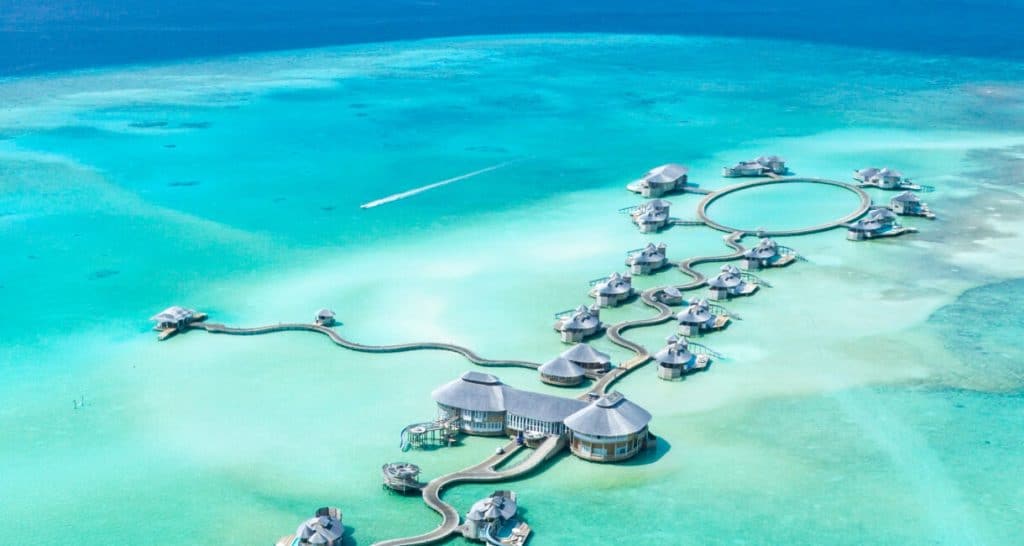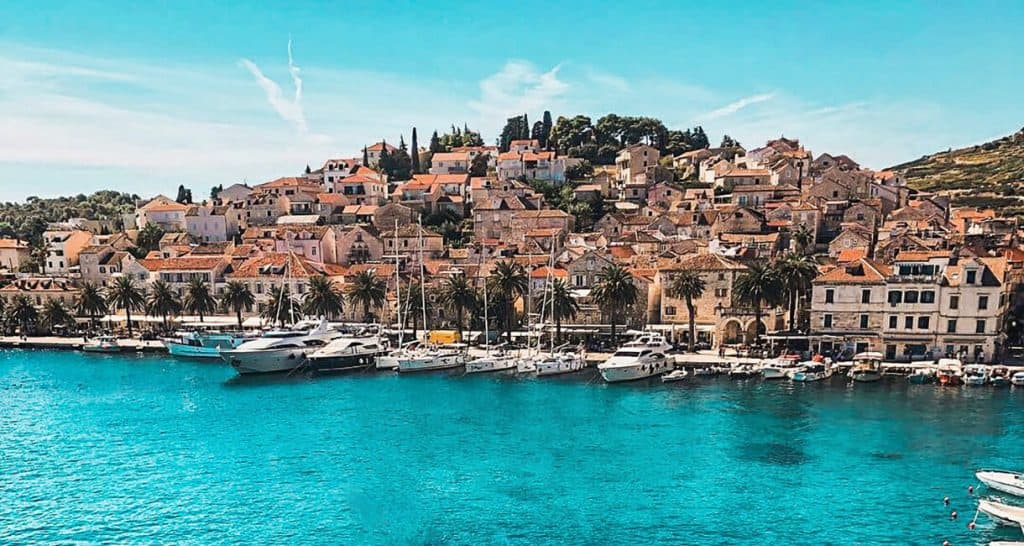Most of us have, at some point, considered what we would do if we could travel back in time. Maybe we would give ourselves some hot investment advice and become millionaires, or change history for the better, or witness our favorite historical event.
One year ago, I left San Francisco, sold and gave away everything I owned, and moved into a 40 liter backpack. I traveled to 45 cities in 20 countries, 3 Disneylands, and 1 bunny island. I also worked 50 hours a week building and launching a startup. And my total costs were less than just the rent in San Francisco.

Traveling is not the same as vacation
There’s a growing community of “digital nomads” who live a location independent lifestyle. We’re software developers, designers, writers, journalists, engineers, and all sorts of people who share a passion for the work we do and experiencing the world.
I propose that a nomadic lifestyle is a productive way to build a real company. I’m working hard on bootstrapping an ambitious startup, Moo.do. I’m traveling because it’s cheaper, more productive, and more inspiring than sitting in one place.
Traveling is the most responsible choice for the sake of my company, my finances, and my personal growth.

I became a nomad by accident
Three years ago I was preparing to leave my job at Microsoft to move to San Francisco to start a startup. My friend asked me “but why do you need to be in San Francisco when you can work on a computer from anywhere?” His question made a lot of sense. As I thought about it more, I began to question my assumptions about a “normal life” which don’t make sense in our modern world.
I reject the idea of a 9–5 job. I want to explore the world while the sun is out instead of wasting the daylight hours working inside and dreaming of my next vacation.
H1: Traveling is cheaper than staying at home
This is my average total monthly spending from one year living in Seattle’s Capitol Hill, one year living in San Francisco’s Upper Haight, one year traveling to 20 countries, and one month at a hotel in Bali. It is much cheaper for me to travel. Since the majority of my costs are from trains and flights, it’s significantly cheaper if I stay in one place.
H2: Traveling makes me more productive
This is my average total monthly spending from one year living in Seattle’s Capitol Hill, one year living in San Francisco’s Upper Haight, one year traveling to 20 countries, and one month at a hotel in Bali. It is much cheaper for me to travel. Since the majority of my costs are from trains and flights, it’s significantly cheaper if I stay in one place.
H3: 9–5 is not optimal
This is my average total monthly spending from one year living in Seattle’s Capitol Hill, one year living in San Francisco’s Upper Haight, one year traveling to 20 countries, and one month at a hotel in Bali. It is much cheaper for me to travel. Since the majority of my costs are from trains and flights, it’s significantly cheaper if I stay in one place.
H4: Traveling expands my cultural bubble
This is my average total monthly spending from one year living in Seattle’s Capitol Hill, one year living in San Francisco’s Upper Haight, one year traveling to 20 countries, and one month at a hotel in Bali. It is much cheaper for me to travel. Since the majority of my costs are from trains and flights, it’s significantly cheaper if I stay in one place.
H5: Traveling is not the same as vacation
This is my average total monthly spending from one year living in Seattle’s Capitol Hill, one year living in San Francisco’s Upper Haight, one year traveling to 20 countries, and one month at a hotel in Bali. It is much cheaper for me to travel. Since the majority of my costs are from trains and flights, it’s significantly cheaper if I stay in one place.
H6: I became a nomad by accident
This is my average total monthly spending from one year living in Seattle’s Capitol Hill, one year living in San Francisco’s Upper Haight, one year traveling to 20 countries, and one month at a hotel in Bali. It is much cheaper for me to travel. Since the majority of my costs are from trains and flights, it’s significantly cheaper if I stay in one place.
Heading H1
Heading H2
Heading H3
Heading H4
Heading H5
Heading H6

Japanese street fashion has made the international news quite a bit this year, but not always for good reasons. From CNN and I-D Magazine to a much-shared Quartz article to various unsourced blog posts, the English-speaking internet has been gleeful in declaring Harajuku “dead”. It’s a cliche at this point to dismiss stories as “Fake News”, but modern media feeds on shocking and upsetting headlines to get more clicks. “Harajuku is Dead!” sells far better than the more accurate “Harajuku is Changing”.
You can have anything you want in life if you dress for it.
Edith Head

I wasted a lot of time when I worked in an office because of commuting and the massive distraction that is the internet. Now I spread my work throughout the day and take big breaks for exploring. After working for a few hours, I reach a milestone and explore the city until I want to get back to work. Or if I hit a problem I can’t figure out, I walk it off until I’ve solved it. Cycling between fun and work makes my days less exhausting and makes me less prone to burnout. Or if I hit a problem I can’t figure out, I walk it off until I’ve solved it.
Peco has proven she’s uniquely tuned into the trends that matter most to Harajuku’s youngest generation of girls. If she says that the swinging 60s have arrived, we aren’t going to argue!

For bonus 1960s-inspired Japanese fashion, check these two groovy boutiques:
- But I must explain to you how all this mistaken idea of denouncing pleasure and praising pain was born.
- I will give you a complete account of the system and expound.
- How all this mistaken idea of denouncing pleasure and praising pain.
- I will give you a complete account of the system and expound.
Fashion you can buy, but style you possess. The key to style is learning who you are, which takes years. There’s no how-to road map to style. It’s about self-expression and, above all, attitude.
- But I must explain to you how all this mistaken idea of denouncing pleasure and praising pain was born.
- I will give you a complete account of the system and expound.
- How all this mistaken idea of denouncing pleasure and praising pain.
- I will give you a complete account of the system and expound.
Although the fashion industry developed first in Europe and America, as of 2017, it is an international and highly globalized industry, with clothing often designed in one country, manufactured in another, and sold worldwide. For example, an American fashion company might source fabric in China and have the clothes manufactured in Vietnam, finished in Italy, and shipped to a warehouse in the United States for distribution to retail outlets internationally.
Because data on the fashion industry typically are reported for national economies and expressed in terms of the industry’s many separate sectors, aggregate figures for the world production of textiles and clothing are difficult to obtain. However, by any measure, the clothing industry accounts for a significant share of world economic output. The fashion industry consists of four levels:
- The production of raw materials, principally Fiber, and textiles but also leather and fur.
- The production of fashion goods by designers, manufacturers, contractors, and others.
- Retail sales.
- Various forms of advertising and promotion.
The fashion industry has long been one of the largest employers in the United States, and it remains so in the 21st century. However, U.S. employment declined considerably as production increasingly moved overseas, especially to China.
“Live with no excuses and travel with no regrets”
These levels consist of many separate but interdependent sectors. These sectors are Textile Design and Production, Fashion Design and Manufacturing, Fashion Retailing, Marketing and Merchandising, Fashion Shows, and Media and Marketing. Each sector is devoted to the goal of satisfying consumer demand for apparel under conditions that enable participants in the industry to operate at a profit.
| Name | Position | Office |
|---|---|---|
| Erica Romaguera | Coach | Audi |
| Caleigh Jerde | Lawyer | Pizza Hut |
| Lucas Schultz | Librarian | Burberry |
| Carole Marvin | Massage Therapist | Division 4 |








